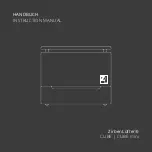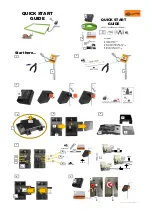
TC1796
Peripheral Units (Vol. 2 of 2)
Controller Area Network (MultiCAN) Controller
User’s Manual
22-10
V2.0, 2007-07
MultiCAN, V2.0
22.1.5
Different CAN Implementations
Basic-CAN and Full-CAN
There is one more CAN characteristic that is related to the interface of a CAN module
(controller) and the host CPU: Basic-CAN and Full-CAN functionality.
In Basic-CAN devices, only basic functions of the protocol are implemented in hardware,
such as the generation and the check of the bit stream. The decision, whether a received
message has to be stored or not (acceptance filtering), and the complete message
management must be done by software. Normally, the CAN device also provides only
one transmit buffer and one or two receive buffers. Therefore, the host CPU load is quite
high when using Basic-CAN modules. The main advantage of Basic-CAN is a reduced
chip size leading to low costs of these devices.
Full-CAN devices (this is the case for the MultiCAN controller as implemented in
TC1796) manage the whole bus protocol in hardware, including the acceptance filtering
and message management. Full-CAN devices contain message objects that handle
autonomously the identifier, the data, the direction (receive or transmit) and the
information of Standard CAN/Extended CAN operation. During the initialization of the
device, the host CPU determines which messages are to be sent and which are to be
received. The host CPU is informed by interrupt if the identifier of a received message
matches with one of the programmed (receive-) message objects. The CPU load of Full-
CAN devices is greatly reduced. When using Full-CAN devices, high baud rates and high
bus loads with many messages can be handled.
















































